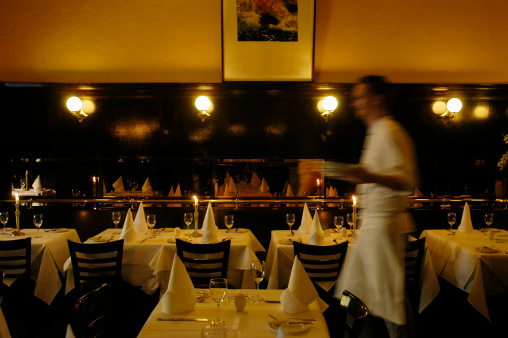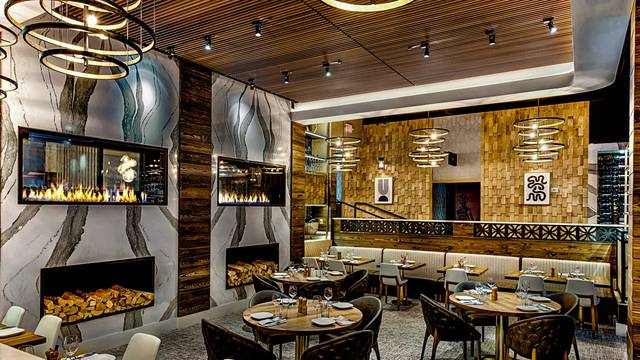Savor Genuine Eastern Cuisine With a Pan-Asian Spin for a Cooking Adventure
Starting a culinary trip through genuine Asian cuisine, enhanced with a Pan-Asian spin, offers a distinct chance to check out the abundant tapestry of flavors that specify the region's diverse culinary customs. This experience invites you to savor the charming equilibrium of tastes-- pleasant, salty, spicy, and sour-- harmonized by aromatic herbs and spices. Visualize the cutting-edge fusion of Thai curry and ramen or the unexpected joy of sushi burritos. As you consider these tempting recipes, take into consideration the social stories and historical influences that form them, each bite supplying a tale waiting to be found.

Discovering Pan-Asian Tastes
In the realm of international gastronomy, Pan-Asian food stands out for its exceptional diversity and the harmonious interaction of tastes from numerous Eastern cultures. This culinary technique celebrates the abundant customs and special active ingredients located across the continent, creating a tapestry of tastes that is both intriguing and rewarding. Key to Pan-Asian cuisine is its capability to stabilize contrasting tastes-- wonderful, salty, spicy, and sour-- while highlighting the quality and high quality of each active ingredient.
From the umami-rich soy sauce of Japan to the fiery chili peppers of Thailand, Pan-Asian food uses a comprehensive combination of flavors. These components are frequently incorporated in inventive methods, improving meals with layers of intricacy. As an example, the use of fragrant natural herbs such as lemongrass and cilantro, usual in Vietnamese and Thai cuisine, adds a rejuvenating illumination to meals, while the unification of coconut milk delivers a luscious, rich texture.
The emphasis on fresh produce and aromatic seasonings makes sure that each dish is not just a feast for the taste however additionally for the senses. Pan-Asian cuisine welcomes restaurants to begin on a cooking trip, discovering the large and differed landscapes of Oriental gastronomy with every bite.
Combination Meals to Try
While Pan-Asian cuisine is celebrated for its standard tastes, the modern culinary landscape is increasingly embracing fusion dishes that blend these traditional aspects with impacts from various other regions. This ingenious technique not only honors the rich heritage of Asian cookeries but likewise presents novel taste experiences that interest contemporary tastes buds.
A prime instance of such a combination recipe is the Korean-Mexican taco, where marinaded bulgogi beef is wrapped in a warm tortilla, covered with kimchi and a hot gochujang-infused salsa. This mix marries the strong, savory flavors of Korea with the vibrant, fresh components of Mexican cuisine. Likewise, sushi burritos have acquired appeal, joining together the fragile creativity of Japanese sushi with the passionate, hand-held ease of a burrito, usually featuring combination components like tempura shrimp and avocado with a drizzle of wasabi mayo.
Another noteworthy meal is Thai curry ramen, which instills the luscious, aromatic spices of Thai curry into the calming broth of standard Japanese ramen, developing an unified blend that tantalizes the detects. These blend dishes prolong past mere novelty; they represent a culinary dialogue between societies, encouraging expedition and technology on the planet of Pan-Asian food.
Crucial Ingredients and Spices
To really appreciate Pan-Asian cuisine, one should comprehend the important components and flavors that develop its foundation. This click over here now diverse cooking design attracts from a rich tapestry of Asian traditions, employing an unified mix of tastes and structures. Key ingredients include soy sauce, fish sauce, and oyster sauce, which impart a savory umami depth important to Eastern meals. Complementary to these are rice vinegar and mirin, lending a fragile level of acidity and sweetness.
Aromatic components are critical, with garlic, lemongrass, and ginger being common across various Pan-Asian recipes. These ingredients give an aromatic base that enhances the complexity of flavors. Spices such as celebrity anise, cardamom, and cinnamon present warmth and character, resembling influences from areas like website here China and India.

Food Preparation Strategies and Tips
Mastering the art of Pan-Asian cuisine needs knowledge with its distinct food preparation techniques, each adding to the dynamic tapestry of tastes this culinary tradition is commemorated for. Central to these techniques is the stir-fry, a quick food preparation method that protects the nutritional integrity and dazzling colors of active ingredients. Making use of a frying pan, the stir-fry approach permits for also warmth circulation, important for accomplishing the characteristic texture and flavor balance of Pan-Asian recipes.
An additional basic strategy is steaming, specifically common in Chinese cuisine. This gentle method maintains the all-natural tastes and nutrients of components, making it suitable for fish and shellfish and vegetables. Dumplings, a beloved staple, frequently take advantage of steaming, resulting in soft, delicious structures.
Barbecuing, likewise essential, passes on smoky depths to meals such as Korean bulgogi or Japanese yakitori (Instagrammable restaurants Islamabad). This technique often entails marinading ingredients, permitting tastes to penetrate deeply prior to cooking over an open fire or warmer
Finally, mastering the art of stabilizing flavors-- pleasant, sour, salty, bitter, and umami-- is crucial. Properly layering these components can raise a recipe from common to extraordinary, supplying a complicated and pleasing culinary experience that personifies the essence of Pan-Asian food.
Eating Experiences Worldwide
Around the world, Pan-Asian food supplies an unequaled eating experience, commemorated for its rich tapestry of flavors and dynamic presentations. This culinary phenomenon has actually transcended cultural borders, catching the hearts and palates of food lovers worldwide. In cosmopolitan cities like New York, London, and Sydney, Pan-Asian dining establishments act as fusions where cooking customs from Thailand, Japan, China, and past converge, supplying restaurants with an eclectic mix of recipes that highlight the region's diversity.
The international appeal of Pan-Asian cuisine lies in its capability to use both authenticity and advancement. Cooks masterfully wed typical active ingredients such as lemongrass, soy sauce, and miso with contemporary techniques, resulting in dishes that are both familiar and refreshingly new. This blend permits restaurants to get started on a cooking trip that values heritage additional reading while embracing modernity.
Moreover, dining experiences are raised with attentively designed settings that reflect the values of Pan-Asian appearances. From minimal Japanese-inspired interiors to lively Thai-themed rooms, each dining establishment offers an unique setting that matches the culinary offerings. Consequently, clients are not simply taking in a meal yet partaking in a social experience, making Pan-Asian dining a really global sensation.
Final Thought
The exploration of Pan-Asian food uses a profound understanding of the intricate interaction of tastes and culinary practices across Asia. By embracing blend meals such as Thai curry ramen and sushi burritos, the culinary trip not only highlights the flexibility of standard ingredients yet likewise showcases innovative modern-day methods. This gastronomic adventure, enhanced by vital spices and cooking approaches, provides an unique possibility to appreciate the cultural diversity and cooking artistry that specify Pan-Asian food on a worldwide range.
Beginning on a cooking journey via authentic Eastern cuisine, improved with a Pan-Asian spin, provides an one-of-a-kind opportunity to check out the rich tapestry of flavors that specify the area's diverse cooking practices.In the realm of worldwide gastronomy, Pan-Asian food stands out for its amazing variety and the harmonious interaction of flavors from numerous Asian cultures. Trick to Pan-Asian food is its capability to stabilize contrasting flavors-- wonderful, salted, spicy, and sour-- while highlighting the freshness and high quality of each active ingredient.
